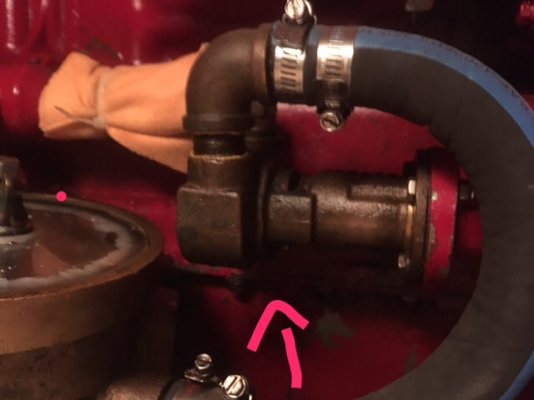Fotoman
Guru
- Joined
- Nov 12, 2009
- Messages
- 649
I just noticed that my water pump is leaking when the engine is running. It's approx a drip every second. Not super familiar with the insides of this component but I assume it must be a worn out seal?
Is it a critical issue or can I keep using the boat for a little while until I can fix it?
Indicated on the picture when the drip is coming from.

Is it a critical issue or can I keep using the boat for a little while until I can fix it?
Indicated on the picture when the drip is coming from.

